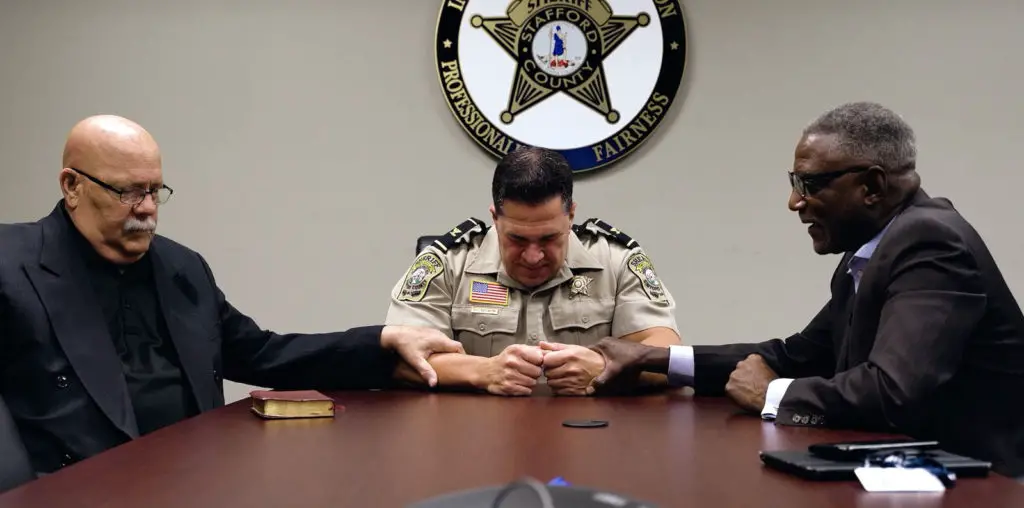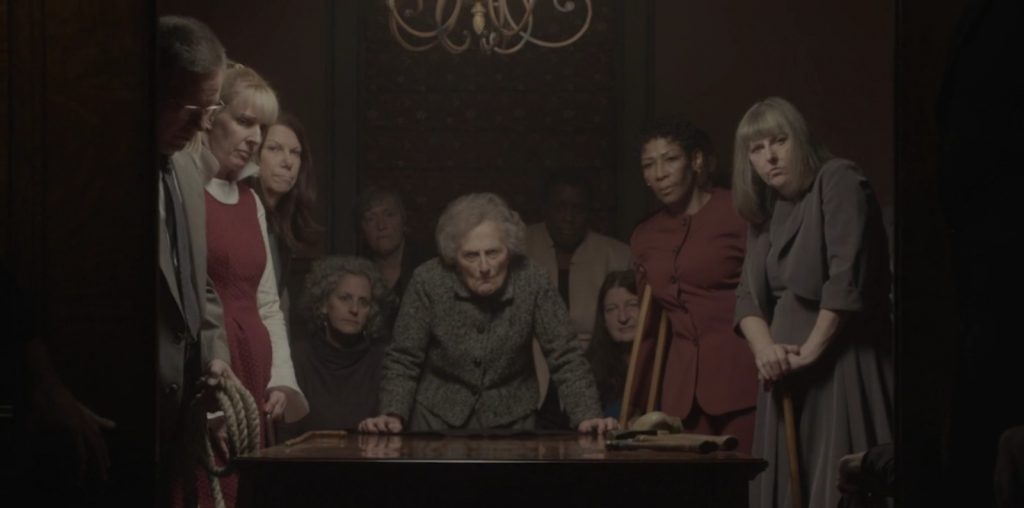
“Paris, Je T’aime” (I love you). Splendid.
Eighteen directors from all over the world are allotted five minutes to tell a story about love that is set in Paris. The ending credits indicate that a few of the mini-films are connected to each other spatially or narratively, but otherwise, “Paris, Je T’aime” watches very much like a compilation of short stories. Some entries leave you craving more, while others are self-contained; and still others impress you as having been plucked from a full-length film. In order of appearance, these “neighborhood romances” are:
“Montmartre” by Bruno Podalydes. A man (Bruno Podalydes) and a woman (Florence Muller) meet while he is parking his car in a tight spot and she is recovering in his back seat after fainting on the sidewalk.
“Quais de Seine” by Gurinder Chadha (“Bride and Prejudice” and “Bend It Like Beckham”). Zarka (Leila Bekhti), a Muslim girl, explains to Francois (Cyril Descours), a Parisian youth, the proper way to get a lady’s attention.
“Le Marais” by Gus Van Sant. Gaspard (Gaspard Ulliel) thinks he has found his soul mate in a young man (Elias McConnell) who does not speak French very well.
“Tuileries” by Ethan and Joel Coen. Steve Buscemi, a tourist, waits for a subway in the Tuileries station. Two locals, Julie (Julie Bataille) and Axel (Axel Kiener), give him a special welcome.
“Loin du 16eme” by Walter Salles (“Motorcycle Diaries”) and Daniela Thomas. Anna (Catalina Sandino Moreno) wakes up before sunrise, drops her baby off at a daycare center, and then takes one bus and two subway cars to reach her place of employment as a nanny for a wealthy, off-screen woman.
“Porte de Choisy” by Christopher Doyle (long-time cinematographer for Hong Kong art cinema darling Wong Kar-Wai). Monsieur Henny (Barbet Schroeder), a businessman, sells a line of Asian hair care products to Madame Lee (Li Xin), the owner of a hair salon—peculiar, almost like a music video. Learn how to say “I love you” in Mandarin (“wo ai ni”) in this metaphor for Western ideals and the commercial conquest of the East.
“Bastille” by Isabel Coixet (“My Life Without Me”). A husband (Sergio Castellitto) falls in love with his wife (Miranda Richardson) again after she informs him that she has terminal leukemia.
“Place des Victories” by Nobuhiro Suwa. Juliette Binoche plays a mother grieving over the death of her son (Martin Combes). Willem Dafoe is a cowboy who lets her see her son one more time.
“Tour Eiffel” by Sylvain Chomet (“Triplets of Belleville”). Two mimes (Paul Mutner and Yolande Moreau) meet in prison and fall in love.
“Parc Monceau” by Alfonso Cuaron (“Children of Men” and “Y Tu Mama Tambien”). Vincent (Nick Nolte) and his daughter Claire (Ludivine Sagnier) take a walk and discuss a very needy male in her life. This segment is filmed in one take, from one end of a Parisian block to the other. The camera begins on the opposite side of the street and eventually travels to the same side as the actors.
“Quartier des Enfants Rouges” by Olivier Assayas (“Clean” and “Irma Vep”). Maggie Gyllenhal plays Liz, an actress in Paris filming a period piece. Ken (Lionel Dray) is a drug dealer who supplies her with a fix and shares an oddly touching moment with her at an ATM machine.
“Place des Fetes” by Oliver Schmitz. Sophie (Aissa Maiga) is new on the job as a medic and realizes the man (Seydou Boro) bleeding to death in a public square is someone she has met before and will never get to know.
“Pigalle” by Richard LaGravenese (“Freedom Writers” and “Living Out Loud”). Fanny Forestier (Fanny Ardant) and Bob Leander (Bob Hoskins) are two theatre performing duo whose act is coming to a close.
“Quartier de la Madeleine” by Vincenzo Natali (“Cypher” and “Cube”). Olga Kurylenko plays a vampire that takes a bite out of Elijah Wood.
“Pere-Lachaise” by Wes Craven. William (Rufus Sewell) and Frances (Emily Mortimer) are going to be married soon. Before the vows can be exchanged, Frances has to be certain that her fiancé is right for her—and possess a modicum of humor somewhere in his inner being. She takes him to visit Oscar Wilde’s grave and receives her answer.
“Faubourg Saint-Denis” by Tom Tykwer. Francine (Natalie Portman) is an actress who falls in love with Thomas (Melchior Beslon), a young blind man. This piece includes sequences in real time as well as fast-forwarded parts. If all of the footage were played at normal speed, Tykwer would have seventy-five percent of a feature-length film.
“Quartier Latin” by Frederic Auburtin and Gerard Depardieu. Gena (Gena Rowlands) and her husband Ben (Ben Gazzara) meet in a cafe to talk about divorcing each other.
“14th arrondissement” by Alexander Payne, who also directed “Sideways”, “About Schmidt” and “Election.” Carol (Margo Martindale) is an American tourist speaking French very badly but with earnestness. Most of the audio consists of her voice-over narration describing her trip to Paris and the precise moment she fell in love with the city.
The segment transitions are directed by Emmanuel Benbihy, who also produced and conceived the concept behind the film, which is not totally unique. Directors have contributed and collaborated on similar projects before, such as “11’09’01 – September 11” (2002), “Five Obstructions” (2003), “Four Rooms” (1995), and “New York Stories” (1989). “Paris, Je T’aime” is nonetheless an absolutely fascinating exercise for both the filmmaker and the viewer in regards to authorial style and recognition. If each segment did not include the director’s name, could you correctly identify them and based on what criteria? Would you assume that the directors adhered to their own tendencies? The mini-films of the Coen brothers and Tom Tykwer are most explicitly consistent with their other films. The first shot of “Tuileries,” for instance, is a close-up of Steve Buscemi (on screen left) slowly turning his head to look at the camera. Tykwer’s piece includes a lot of footage that is sped up and repeating lines of dialogue, suggesting not only the passing of time but also a routine that the characters have settled into, much his film “Run Lola Run.”
In terms of tone or narrative, Wes Craven and Gurinder Chadha’s entries are respectively Craven-esque and Chadha-like. Olivier Assayas and Alfonso Cuaron also demonstrate a certain way of capturing the characters in their stories similar to their other films.
Most of the directors also wrote their contributions, with the exceptions of “Quais de Seine” (Gurinder co-wrote with Paul Mayeda Berges), “Porte de Choisy” (Doyle co-wrote with Gabrielle Keng and Kathy Li), and “Quartier Latin” (penned by Gena Rowlands). There is a different cinematographer for each mini-film too.
I’m sure many viewers would like to see some of these stories turned into feature length films, and I can’t help but wonder if the investors would provide the capital if enough interest were shown for a particular segment. On that note, to whomever it may concern, I would certainly pay to see more of Gus Van Sant’s “Le Marais,” Gurinder Chadha’s “Quais de Seine,” Wes Craven’s “Pere-Lachaise,” and the Coen Brothers’ “Tuileries.” Or, if it were more convenient, perhaps another “film collective” entitled “New Orleans, Tu Me Manques” (I miss you).


